Korea’s popular tuna kimbap with crunchy cucumber! These yummy rice rolls are made with canned tuna and don’t require any cooking (except for the rice). Super easy to make with just a few ingredients. Perfect for picnics, road trips, or lunchboxes – a light meal or snack on the go!
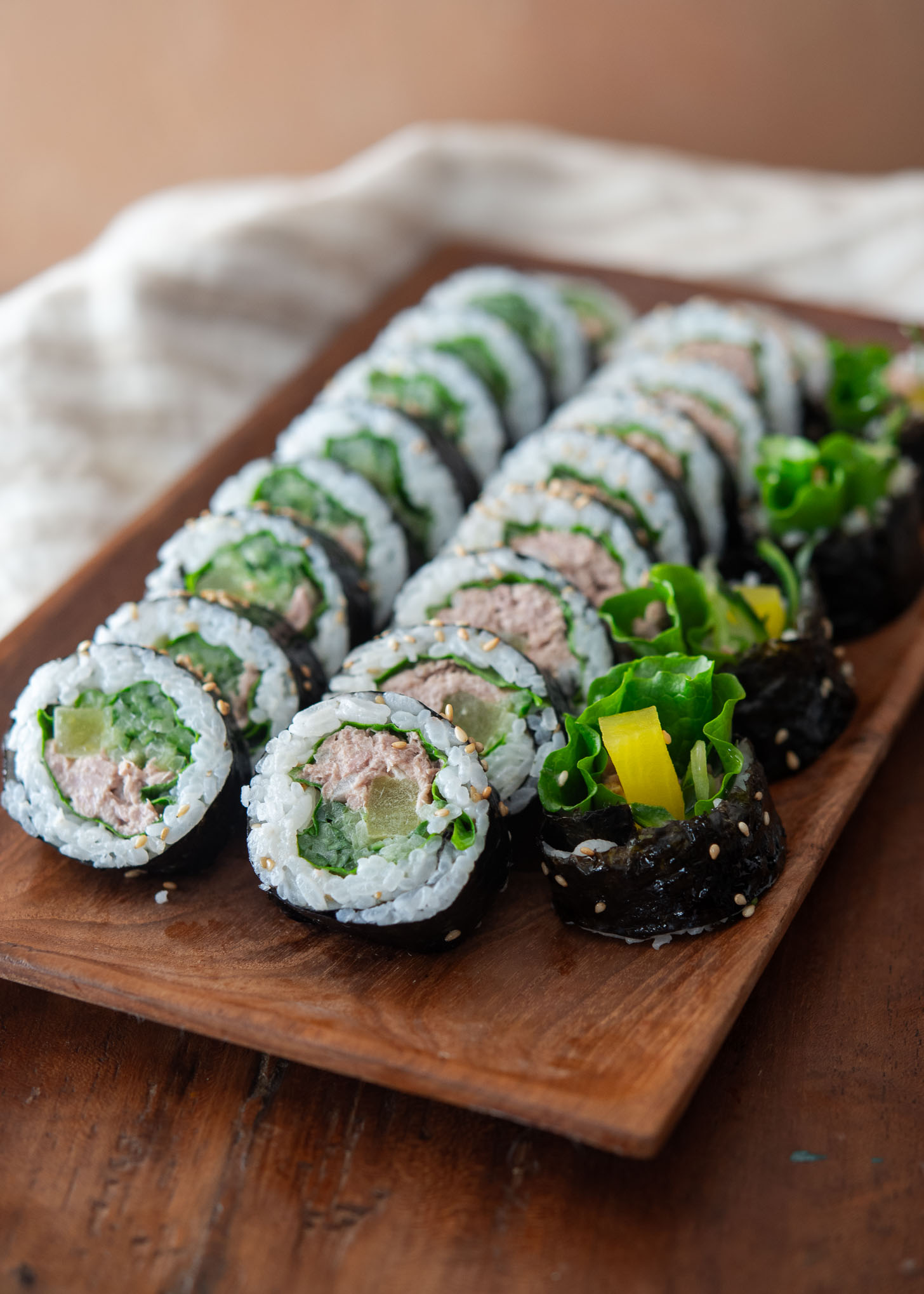

Just like sandwiches are the perfect snack to grab and go, kimbap is Korea’s version of that. These rice rolls are packed with all sorts of yummy things.
With so many kinds to try, you’ll never get bored. Tuna kimbap, known as chamchi gimbap (참치김밥) in Korean, is one of the favorites you’ll find everywhere in Korea.
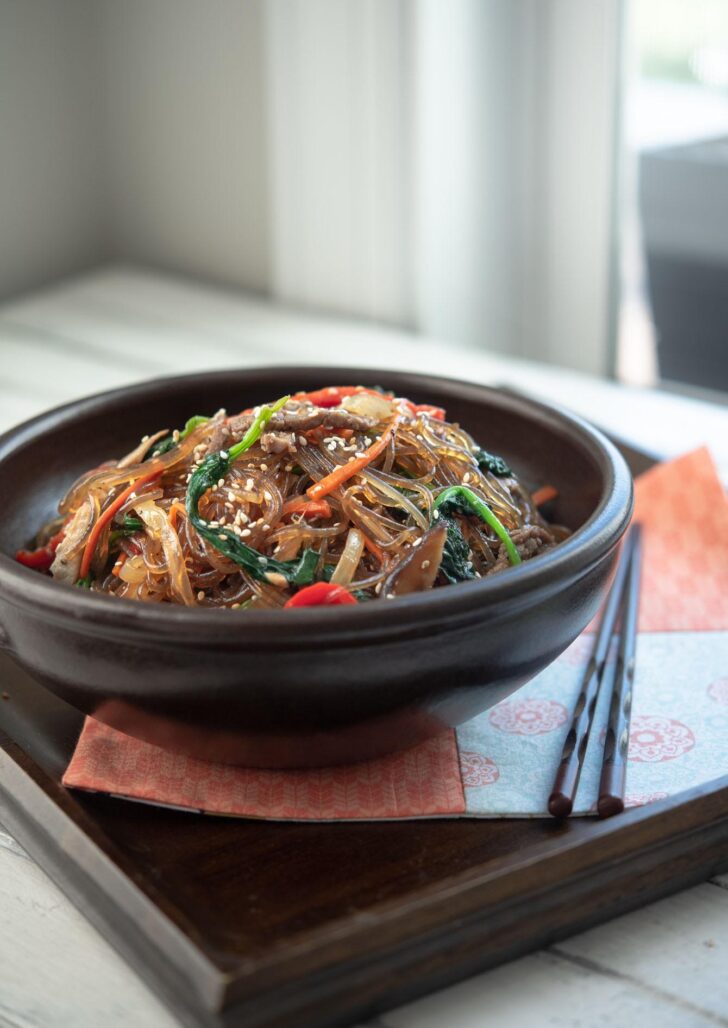

Get new recipes via email:
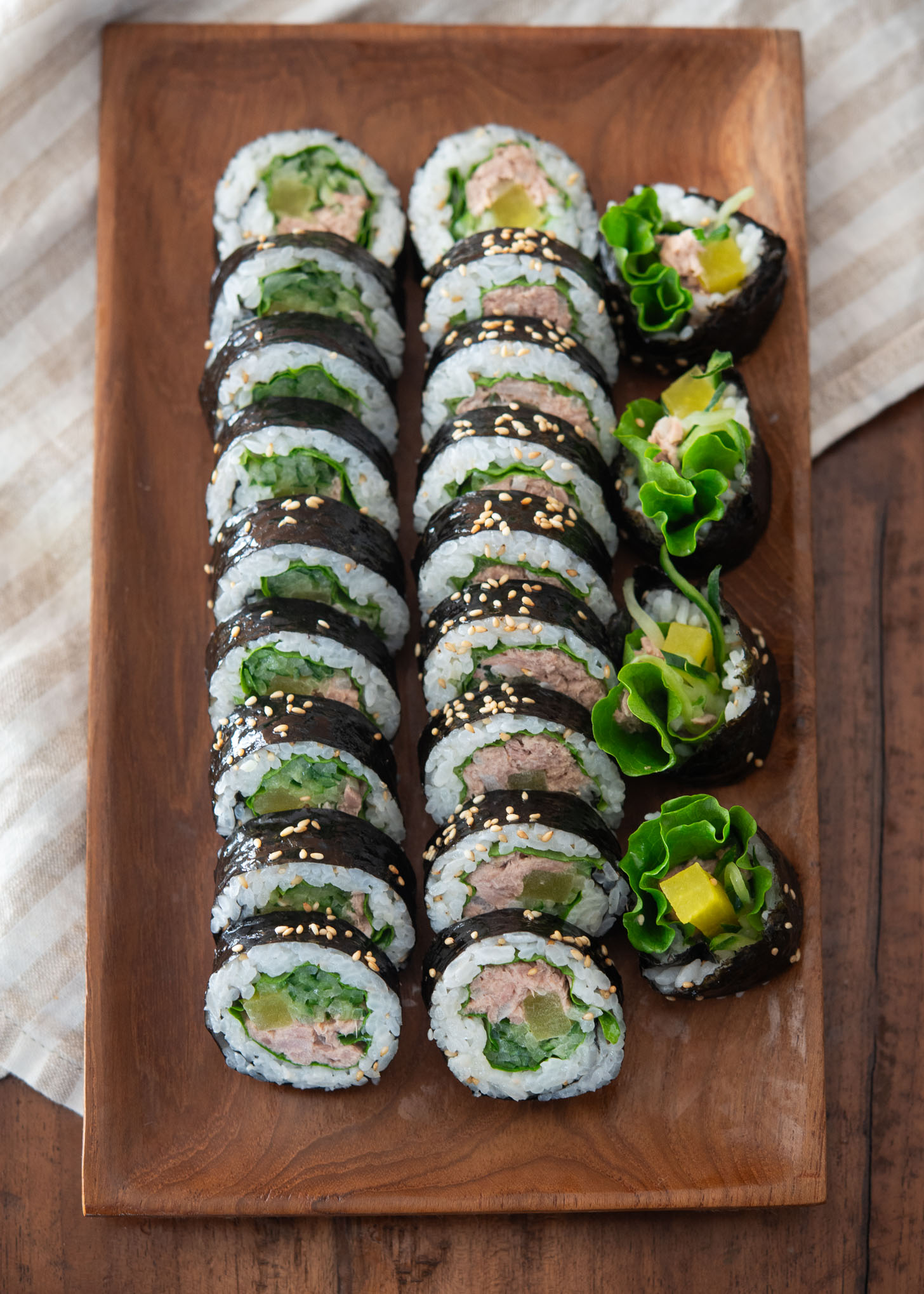

I’ve shared a classic kimbap recipe before, with full of bright veggies. This tuna version is another great one to add to your list of Korean dishes to try.
It’s super easy to make with just a few ingredients, probably ones you already have. It’s also a clever way to use up leftover white rice.
No wonder why Trader Joe’s kimbap is so popular – it’s all about keeping things easy, tasty and affordable.
Why Making Tuna Kimbap with Cucumber?
Kimbap is a popular Korean rice roll similar to sushi, but flavored uniquely with its own set of ingredients. It usually has seasoned rice, a range of vegetables, and proteins, all snugly wrapped in seaweed sheets.
Tuna Kimbap (참치 김밥) distinguishes itself by incorporating canned tuna as the main protein, alongside other fillings, all rolled together in a seaweed sheet.
Making tuna kimbap should be as easy as you want it to be, keeping it simple yet flavorful. Think of it like making a tuna sandwich: straightforward, focusing on the tuna without overloading on extras. That’s the essence of a great recipe – simplicity and taste above all.
Cucumber (Oi, 오이) is a great match for the tuna, offering freshness and crunch. The addition of Korean radish pickle adds tang, nicely offsetting the gentle flavors of tuna and cucumber.
This recipe is all about delicious tastes and easy steps, making it perfect for anyone to try — no need to cooking required (except for the rice)! Plus, it’s healthy and nutritious.
Recipe Ingredients and Preparation Tips
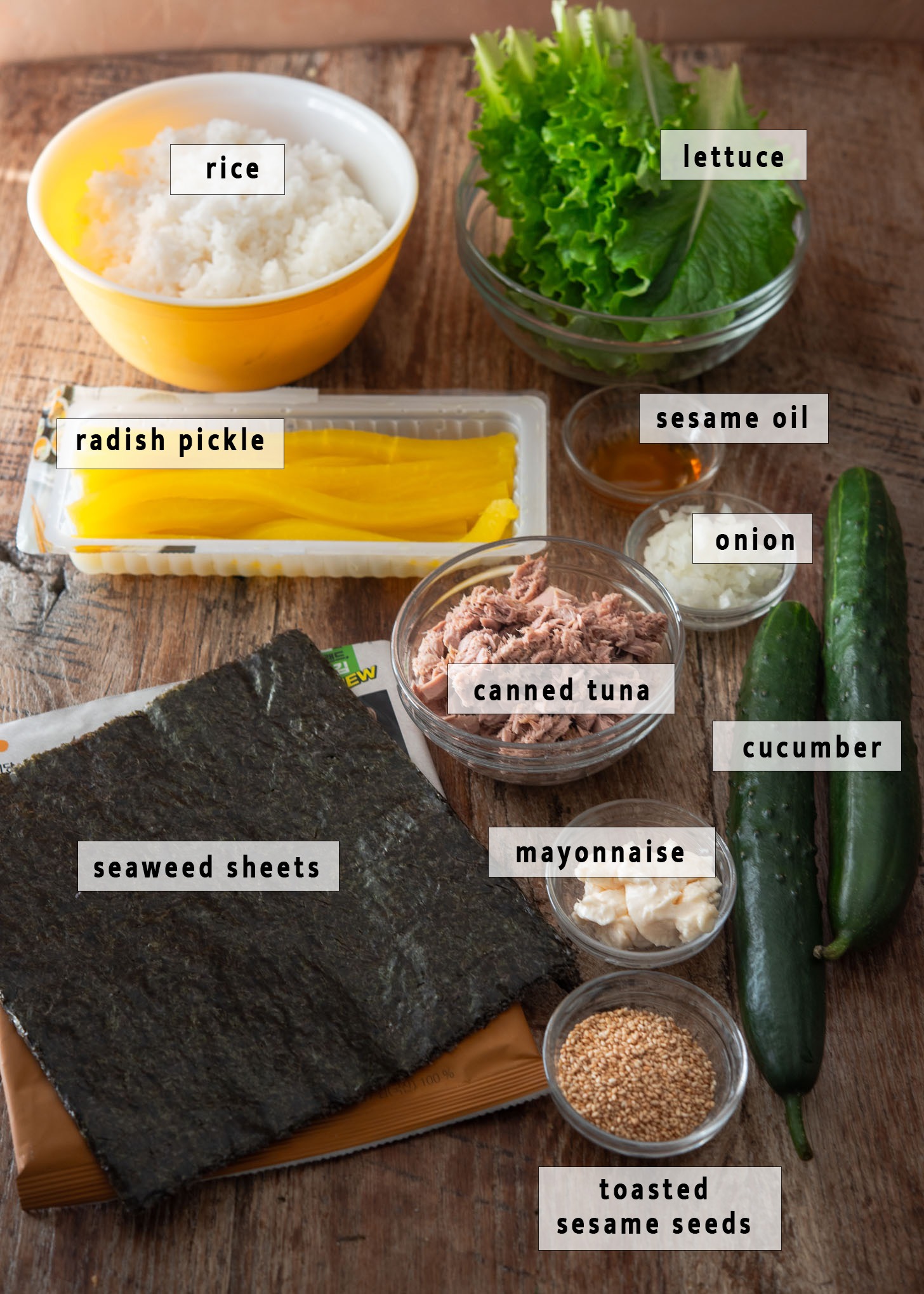

- Dried Roasted Seaweed Sheets: Search for packages labeled as Gim (김) or sushi nori.
- Canned Tuna: Choose chunk tuna. Make sure it’s thoroughly drained, so it’s not too oily or watery for the rice.
- Chopped Onion and Mayonnaise: These are used to add flavor to the tuna.
- Cooked Rice (sushi rice): For better results, use white short-grain or medium-grain rice.
- Make sure your rice is cooled down to the room temperature if using freshly cooked rice. Too-hot rice can make the seaweed shrivelled and soggy.
- Salt, Sesame Oil, Toasted Sesame Seeds: These ingredients season the rice.
- Pre-toasted sesame seeds are available at Asian, Korean, or major local grocery stores.
- Cucumber: Julienne or slice into matchsticks for texture.
- Radish Pickle (Danmuji): Available in Korean markets or Asian markets’ refrigerated sections.
- If unavailable, you can substitute with any rinsed pickled vegetable. The flavor profile will be slightly different.
- Lettuce: Choose green leaf or romaine lettuce for freshness. It acts as a barrier between the rice and filling, keeping the tuna seasoning from soaking into the rice.
How to make Cucumber Tuna Kimbap
Preparing Your Ingredients
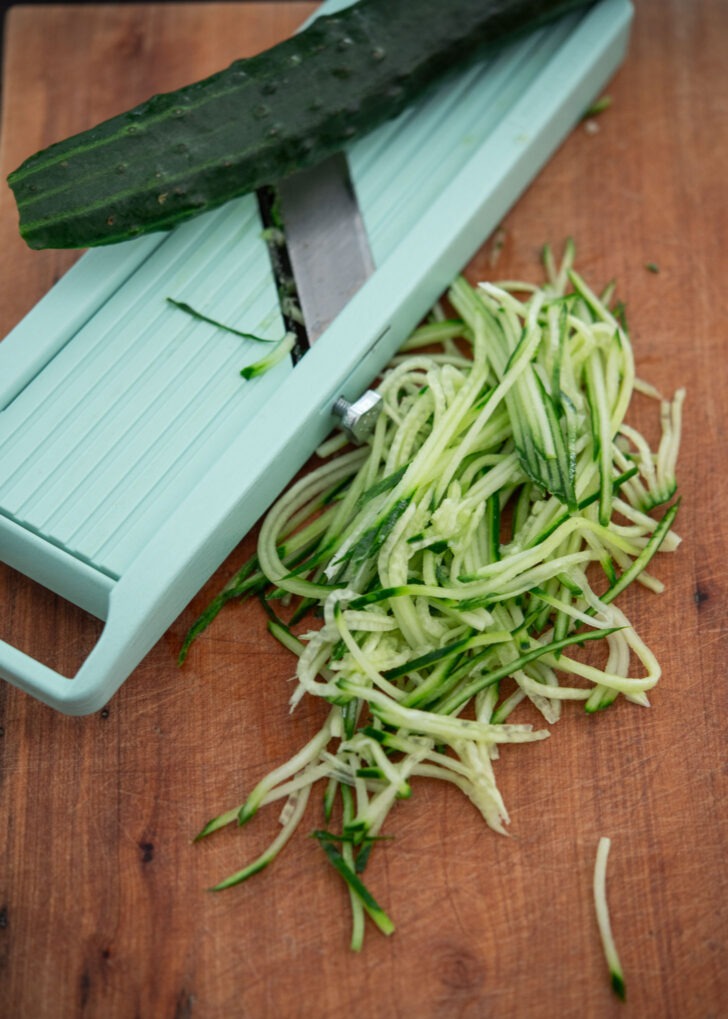

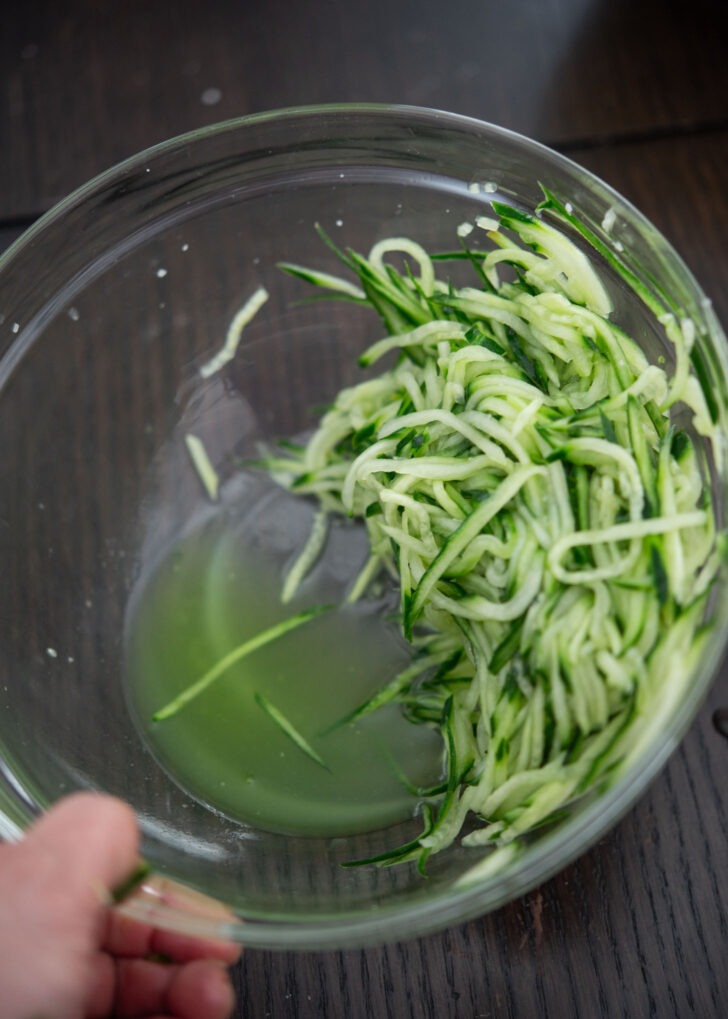

- Thinly slice the cucumber using a mandolin slicer or knife. Place them in a large bowl, sprinkle a bit of salt over the cucumber strips, toss, and let them sit for 5 minutes to draw out moisture.
- After they’ve sat, gently squeeze out the excess water. This step ensures the cucumbers remain crisp and well seasoned.
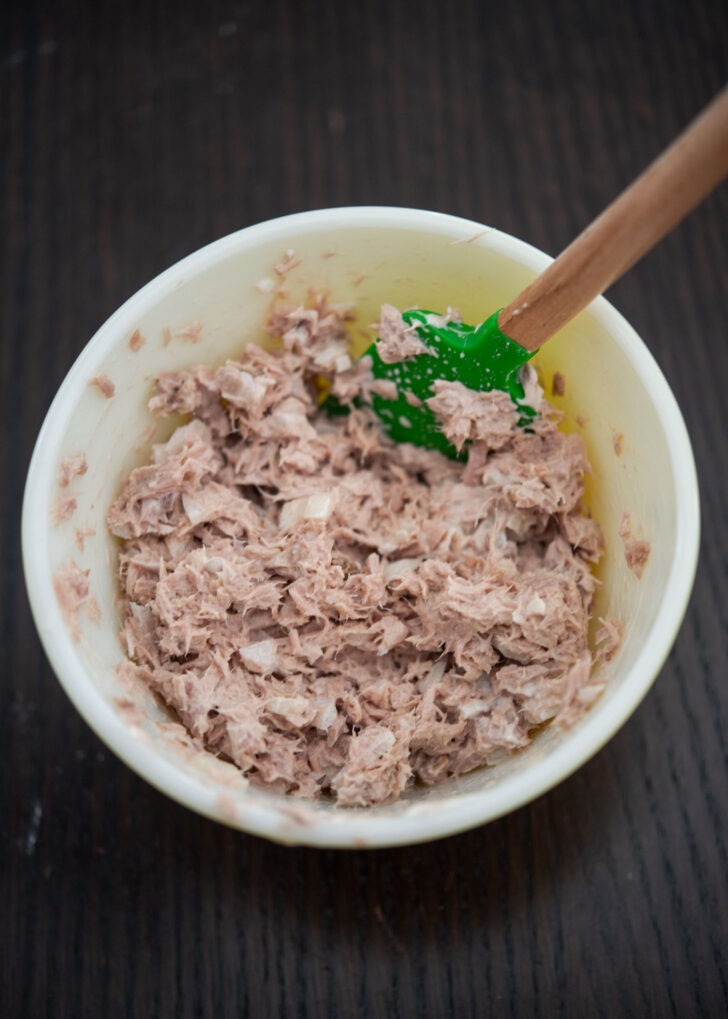

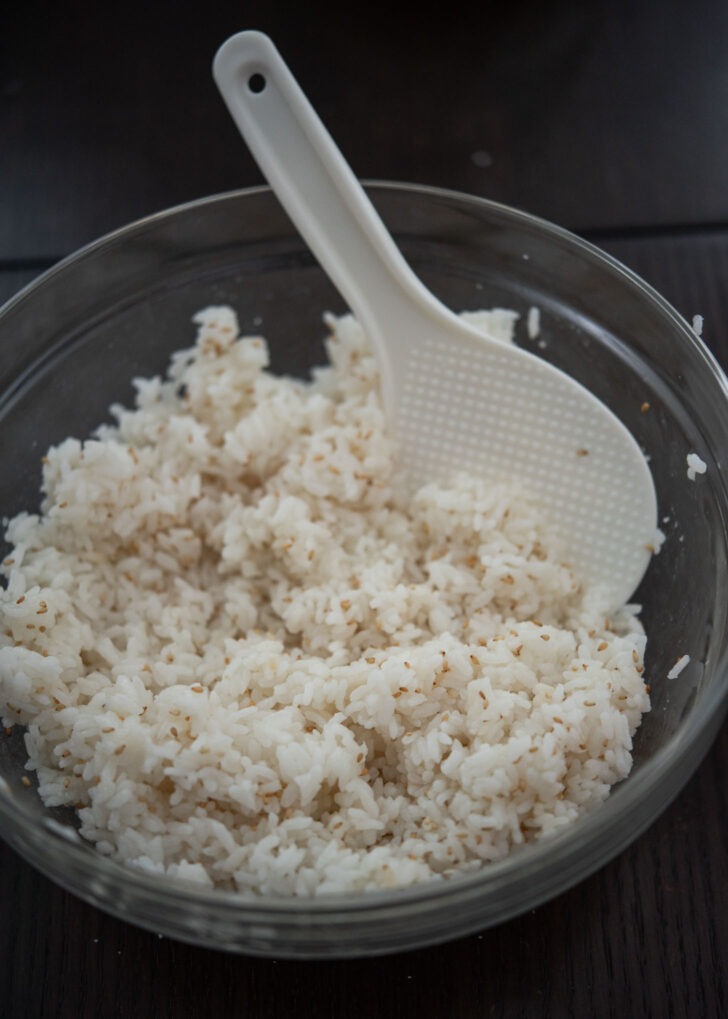

- For the tuna mix, blend well-drained canned tuna with finely chopped onion and mayonnaise.
- Season rice by mixing in salt, sesame oil, and toasted sesame seeds.
Assembling Your Kimbap
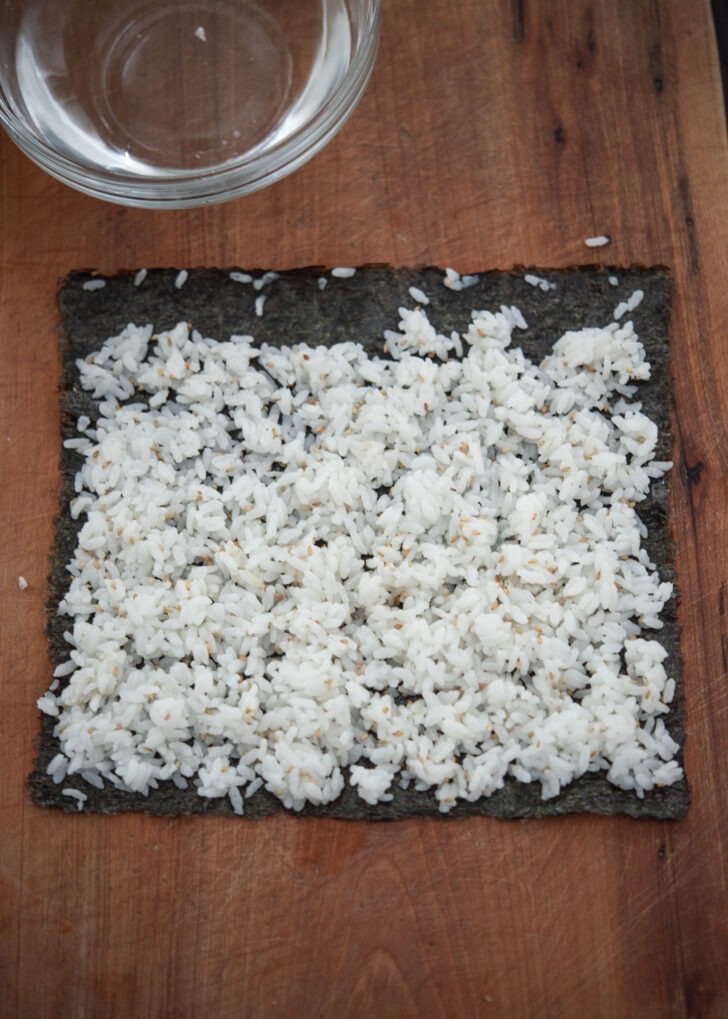

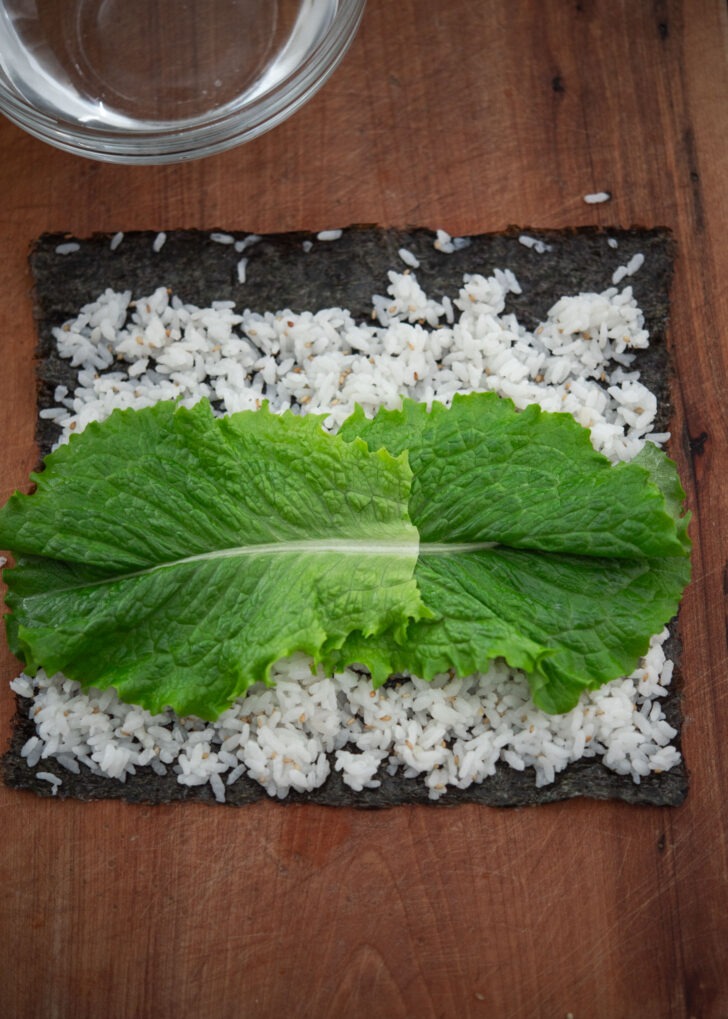

- Lay a sheet of seaweed (gim), shiny side down, on a cutting board or clean surface with the longer edge facing you.
- Evenly spread about 1 cup of rice over the seaweed. If the rice sticks, wet your fingers slightly.
- Place two lettuce leaves at the edge closest to you on top center of the rice.
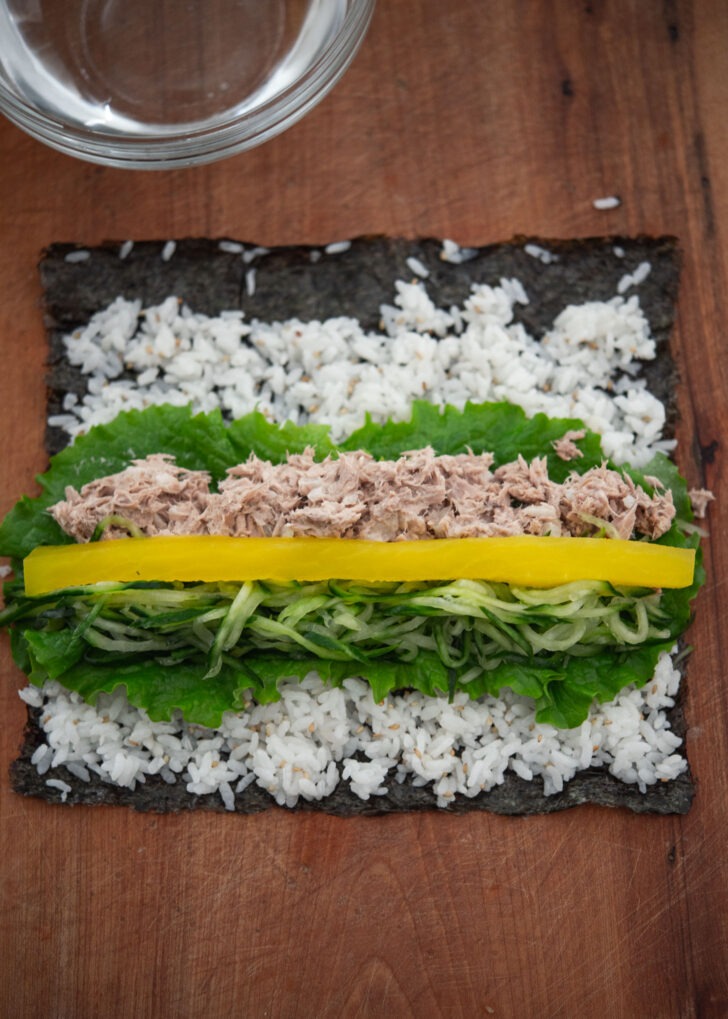

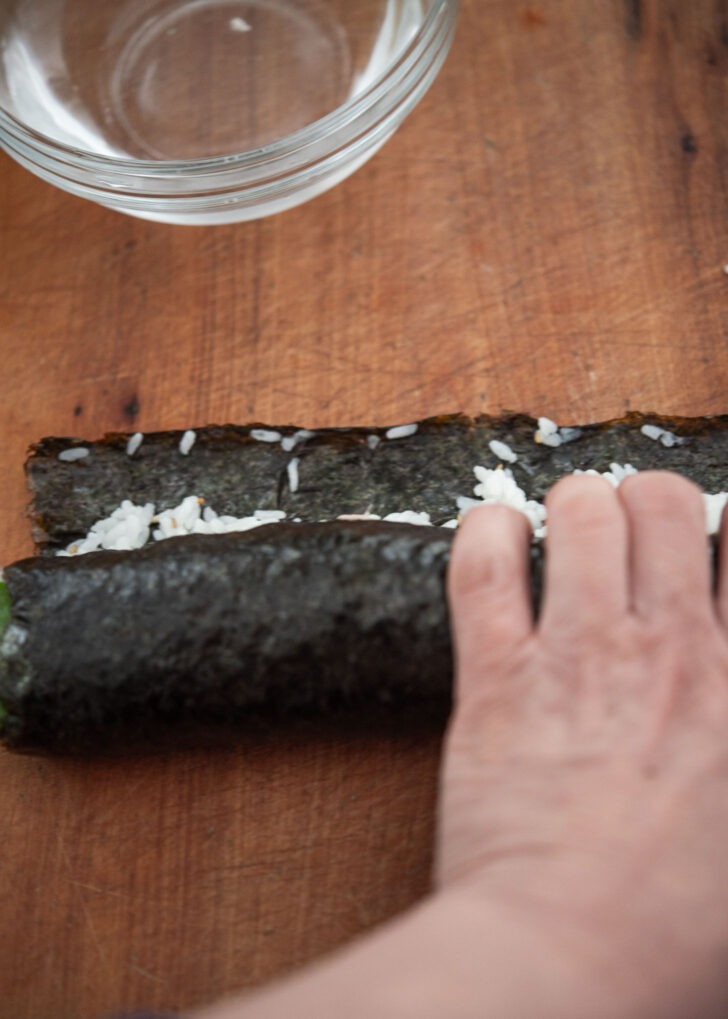

- Spread tuna mixture and cucumber strips on top of lettuce evenly. Add a strip of radish pickle for an extra tangy crunch.
- Carefully roll the seaweed over the fillings, using both hands to tuck in the ingredients. Apply gentle pressure to ensure the kimbap roll is tight and compact. Watch the tutorial video for visual instruction.
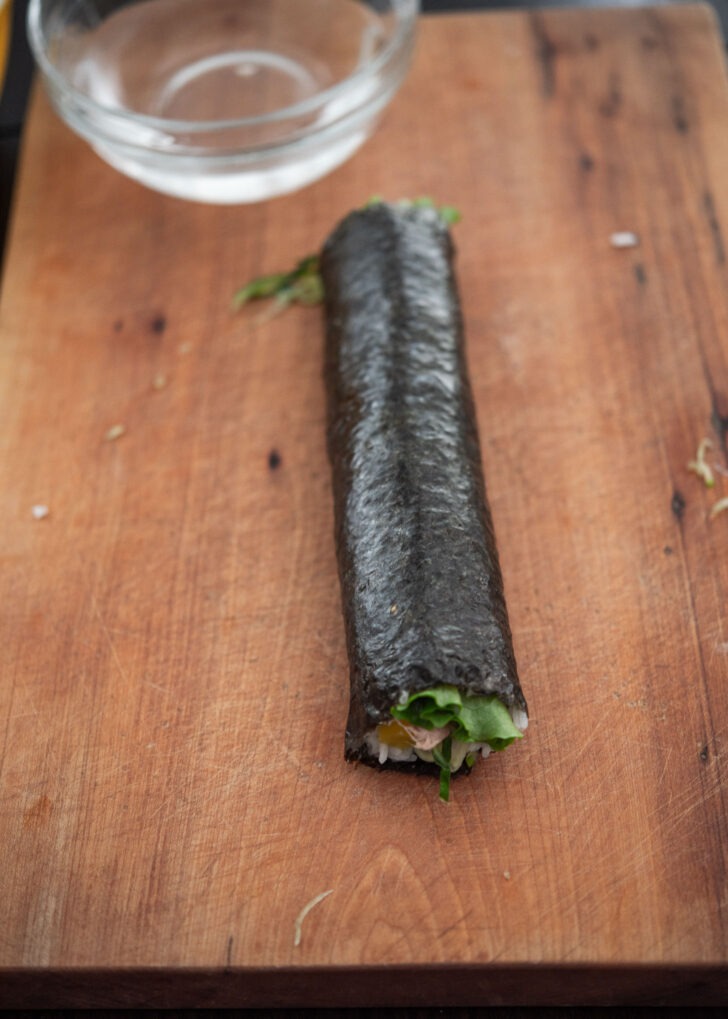

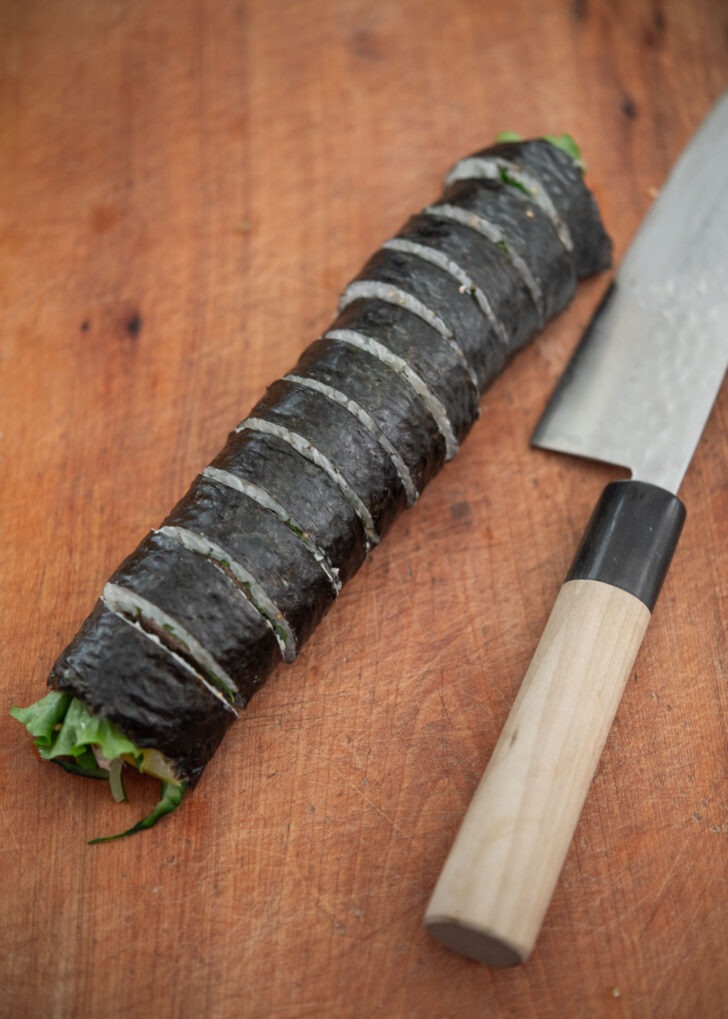

- Before slicing the roll into bite-sized pieces, apply a little bit of sesame oil to a sharp knife to prevent sticking. Clean the knife with a damp towel in between the cutting. Cut the roll into 1/2-inch bite sizes.
- For a glossy finish, brush the roll with a touch of sesame oil and sprinkle with toasted sesame seeds.
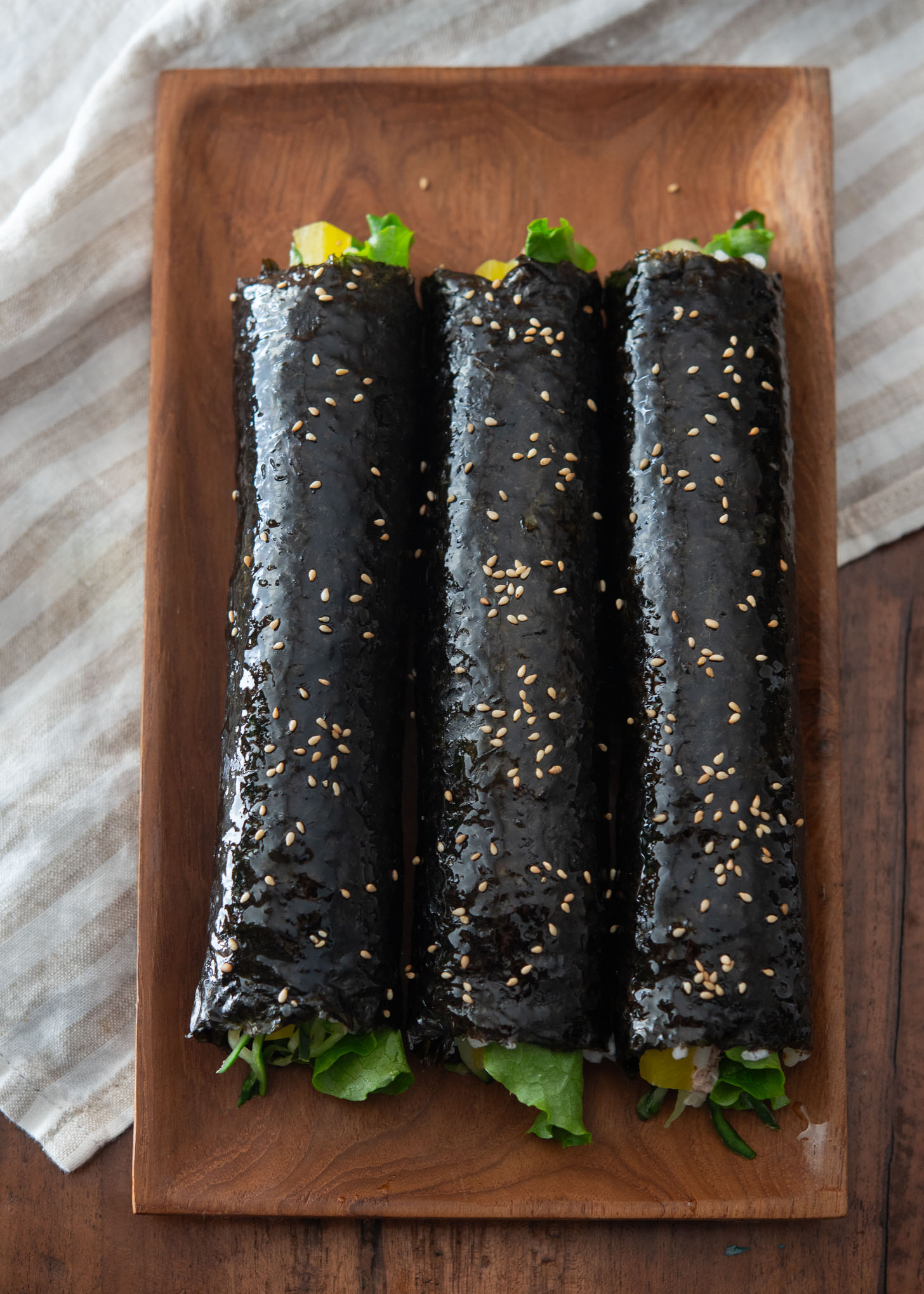

Tips for rolling Kimbap
- Be careful not to overfill the ends with tuna to prevent spillage during rolling.
- Refrain from filling the kimbap too much, as it could cause the roll to burst open when you cut it.
- The initial roll is crucial; hold the fillings securely to keep them in place. Once you’ve made the first wrap, gently press to shape the roll, then finish rolling. A firm final squeeze ensures the roll maintains its shape.
- If you’re not comfortable rolling with your hands, use a Bamboo sushi mat to firm up the roll.
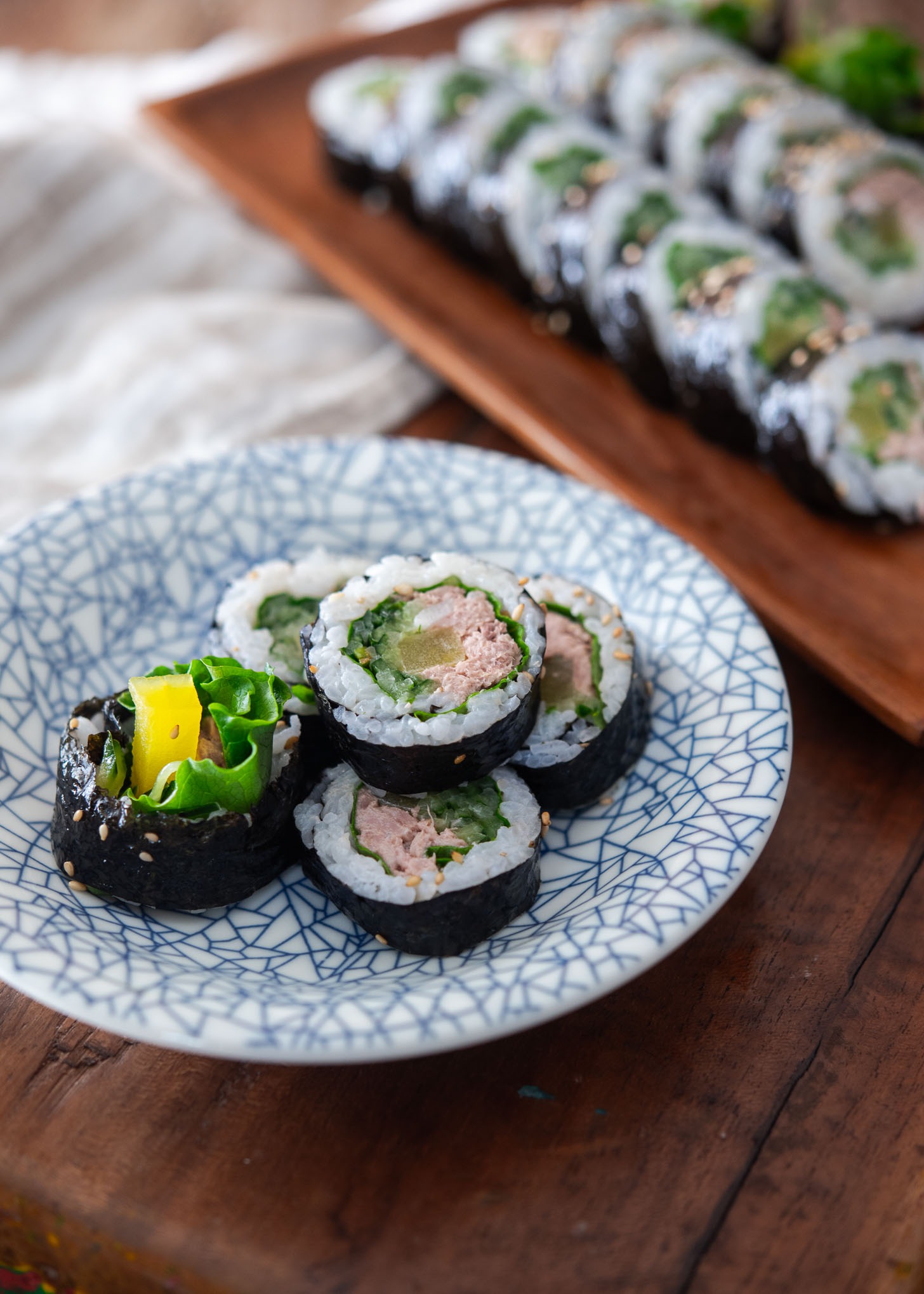

Storage
For the best taste, enjoy kimbap on the day it’s made or the following day. Store it in the fridge in an airtight container, and slice it into bite-sized pieces right before serving to prevent the rice from drying out.
Love this recipe? Rate it and share your experience in the comments below! On Instagram? Tag me to showcase your creation. For more delicious recipes, subscribe to our newsletter!
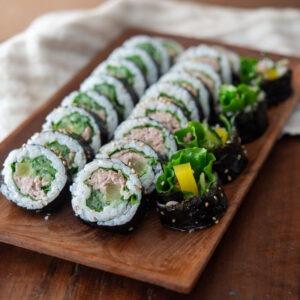

Easy Cucumber Tuna Kimbap (Oi Chamchi Gimbap)
Korea’s favorite Tuna Kimbap with crunchy cucumber! Easy to make with just a few ingredients, these delicious rice rolls are perfect for a light meal or snack, great for picnics, road trips, or lunchboxes!
For tuna
- 2 5-oz each canned tuna
- 2 tbsp minced onion
- 2 tbsp mayonnaise
For other ingredients
- 1 English cucumber, or 2 Kirby cucumber
- 1 tsp kosher salt
- 8 romain lettuce leaves, Use only green part
- 4 strips radish pickle
- extra sesame oil and sesame seeds, for ganish
For cucumber
-
Thinly slice the cucumber using a mandolin slicer or knife. Place them in a large bowl, sprinkle salt over the cucumber strips, toss, and let them sit for 5 minutes to draw out moisture. After they’ve sat, gently squeeze out the excess water. This step ensures the cucumbers remain crisp and well seasoned. Transfer the cucumber to a bowl.
For rice
-
Season the cooked rice by mixing in salt, sesame oil, and toasted sesame seeds in a large mixing bowl.
Assembling kimbap
-
Lay a sheet of seaweed (gim), shiny side down, on a cutting board or clean surface with the longer edge facing you. Evenly spread about 1 cup of rice over the seaweed. If the rice sticks, wet your fingers slightly with water.
-
Place two lettuce leaves at the edge closest to you on top center of the rice, followed by the tuna mixture and cucumber strips on top of lettuce. Add a strip of radish pickle for an extra tangy crunch.
-
Carefully roll the seaweed over the fillings, using both hands to tuck in the ingredients. Apply gentle pressure to ensure the kimbap roll is tight and compact. If you’re not comfortable rolling with your hands, use a Bamboo sushi mat to firm up the roll.
-
For a glossy finish, brush the roll with a touch of sesame oil and sprinkle with toasted sesame seeds. Before slicing the roll into bite-sized pieces, apply a little bit of sesame oil to a sharp knife to prevent sticking. Cut the roll into 1/2-inch bite sizes. Clean the knife with a damp towel when needed and apply oil again.
- For optimal results, use white short-grain or medium-grain rice. Make sure your rice is cooled down to the room temperature if using freshly cooked rice. Too-hot rice can make the seaweed shrivelled and soggy.
- Radish Pickle (Danmuji) is available in Korean markets or Asian markets’ refrigerated sections. If unavailable, you can substitute with any rinsed pickled vegetable. The flavor profile will be slightly different.
- For the best taste, enjoy kimbap on the day it’s made or the following day. Store it in the fridge in an airtight container, and slice it into bite-sized pieces right before serving to prevent the rice from drying out.
Calories: 305kcal, Carbohydrates: 50g, Protein: 6g, Fat: 9g, Saturated Fat: 1g, Polyunsaturated Fat: 5g, Monounsaturated Fat: 2g, Trans Fat: 0.01g, Cholesterol: 3mg, Sodium: 780mg, Potassium: 323mg, Fiber: 3g, Sugar: 2g, Vitamin A: 4961IU, Vitamin C: 5mg, Calcium: 68mg, Iron: 1mg

